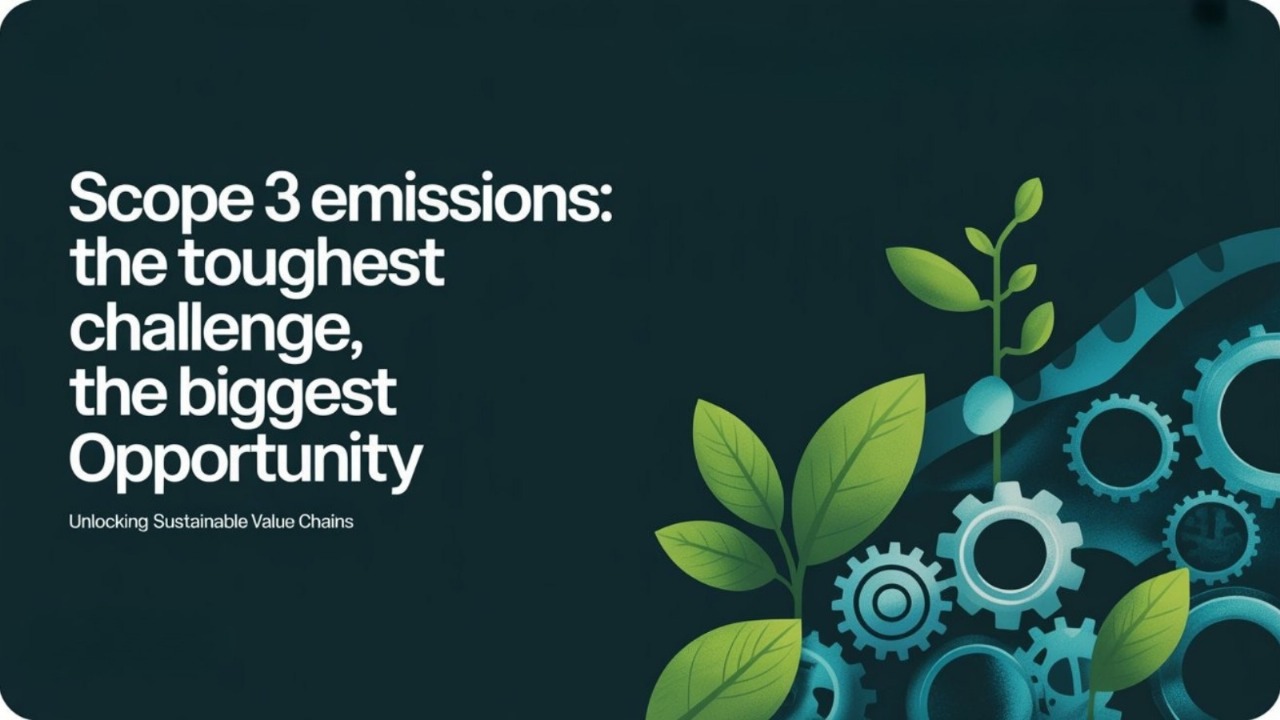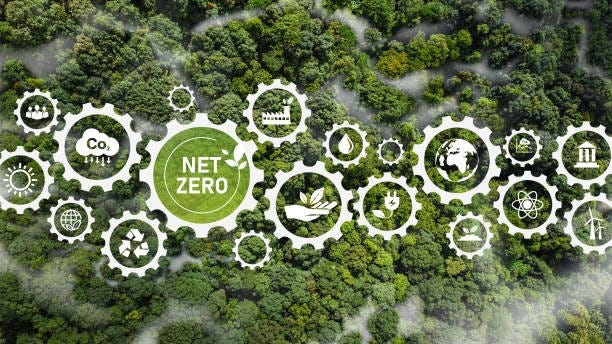The Importance of Sustainability Reporting
How Businesses Can Create a Greener Future

In today's fast-paced world, sustainability has become more than just a buzzword; it has become a necessity for businesses to thrive. Consumers are increasingly conscious of the impact their purchases have on the environment and are demanding that companies take responsibility for their actions. Enter sustainability reporting – a way for businesses to showcase their environmental, social, and governance efforts to their stakeholders.
But what exactly is sustainability reporting? And why is it important? In this article, we will delve into the significance of sustainability reporting and how it can help businesses create a greener future.
Sustainability reporting goes beyond traditional financial reporting by providing a comprehensive view of a company's environmental and social impacts. It allows businesses to not only identify areas for improvement but also demonstrate their commitment to sustainable practices. By reporting their efforts transparently, companies can build trust and strengthen their reputation among consumers, investors, and other stakeholders.
Join us as we explore the various benefits of sustainability reporting and discover how businesses can leverage this powerful tool to drive positive change and contribute to a greener, more sustainable world. Together, let's unlock the potential for a brighter future.
What is sustainability reporting?
In today's fast-paced world, sustainability has become more than just a buzzword; it has become a necessity for businesses to thrive. Consumers are increasingly conscious of the impact their purchases have on the environment and are demanding that companies take responsibility for their actions. Enter sustainability reporting – a way for businesses to showcase their environmental, social, and governance efforts to their stakeholders.
But what exactly is sustainability reporting? And why is it important? In this article, we will delve into the significance of sustainability reporting and how it can help businesses create a greener future.
Why is sustainability reporting important for businesses?
Sustainability reporting goes beyond traditional financial reporting by providing a comprehensive view of a company's environmental and social impacts. It allows businesses to not only identify areas for improvement but also demonstrate their commitment to sustainable practices. By reporting their efforts transparently, companies can build trust and strengthen their reputation among consumers, investors, and other stakeholders.
Sustainability reporting encompasses a wide range of topics, including carbon emissions, waste management, water usage, employee well-being, community engagement, and supply chain sustainability. It involves collecting data, setting targets, implementing strategies, and measuring performance to drive continuous improvement in these areas. The ultimate goal of sustainability reporting is to create a more sustainable and equitable world for future generations.
Benefits of sustainability reporting
Sustainability reporting is important for businesses for several reasons. Firstly, it helps them identify and mitigate risks associated with environmental and social issues. By understanding their impacts and dependencies, companies can proactively address potential risks such as climate change, resource scarcity, and reputational damage.
Secondly, sustainability reporting can lead to cost savings and operational efficiencies. By measuring and managing their environmental impacts, businesses can identify opportunities for waste reduction, energy efficiency, and resource optimization. This not only benefits the environment but also improves the bottom line.
Thirdly, sustainability reporting is crucial for building trust and maintaining a positive reputation. Consumers are increasingly making purchasing decisions based on a company's sustainability practices. By transparently reporting their efforts, businesses can demonstrate their commitment to responsible practices and differentiate themselves in the market.
Key components of a sustainability report
Sustainability reporting offers numerous benefits for businesses. Firstly, it provides a platform for companies to communicate their sustainability goals, strategies, and progress to stakeholders. This transparency helps build trust and credibility, leading to stronger relationships with customers, investors, employees, and communities.
Secondly, sustainability reporting can drive innovation and business growth. By setting ambitious sustainability targets, businesses are motivated to find creative solutions to environmental and social challenges. This can result in new products, services, and business models that meet the evolving needs of customers while minimizing negative impacts.
Thirdly, sustainability reporting can enhance a company's competitiveness and attract investors. Many investors now consider environmental, social, and governance (ESG) factors when making investment decisions. By disclosing their ESG performance through sustainability reports, businesses can attract socially responsible investors and potentially lower their cost of capital.
How to create a sustainability reporting framework

A comprehensive sustainability report typically includes several key components. These include:
1. Executive Summary: A concise overview of the company's sustainability performance, goals, and achievements.
2. Company Profile: Background information about the company, including its mission, values, and governance structure.
3. Materiality Assessment: Identification of the most significant environmental, social, and governance issues relevant to the company and its stakeholders.
4. Targets and Performance: Clear targets and progress towards sustainability goals, including key performance indicators (KPIs) and metrics.
5. Stakeholder Engagement: Description of how the company engages with its stakeholders, including customers, employees, suppliers, communities, and investors.
6. Supply Chain Management: Assessment of the sustainability performance of the company's supply chain, including supplier engagement and responsible sourcing practices.
7. Risk Management: Identification and management of environmental and social risks and opportunities that could impact the company's long-term viability.
8. Governance and Ethics: Description of the company's governance structure, ethical principles, and management of conflicts of interest.
9. External Certification and Awards: Recognition and certifications received by the company for its sustainability efforts.
Examples of successful sustainability reporting
Creating a sustainability reporting framework requires careful planning and execution. Here are some steps to guide businesses in developing an effective framework:
1. Set Goals: Define clear and measurable sustainability goals that align with the company's mission and values. These goals should be ambitious yet achievable, with specific targets and timelines.
2. Engage Stakeholders: Identify key stakeholders and engage them in the sustainability reporting process. This can include employees, customers, suppliers, investors, and communities. Their input and feedback will help ensure the report is relevant and meaningful.
3. Collect Data: Collect accurate and reliable data on the company's environmental and social impacts. This may involve conducting internal audits, surveys, and data analysis. It is important to use standardized measurement methodologies and industry best practices to ensure consistency and comparability.
4. Set KPIs: Define key performance indicators (KPIs) that will be used to track progress towards sustainability goals. These KPIs should be relevant, measurable, and aligned with industry benchmarks.
5. Report and Communicate: Prepare a comprehensive sustainability report that provides a transparent and balanced view of the company's performance. This report should be easily accessible to stakeholders through various channels, such as the company's website, annual reports, and social media.
6. Monitor and Improve: Continuously monitor performance against targets and seek opportunities for improvement. Regularly update the sustainability report to reflect progress, challenges, and new initiatives.
Tools and resources for sustainability reporting
Several companies have set the benchmark for sustainability reporting. One such example is Patagonia – an outdoor clothing and gear brand known for its commitment to environmental and social responsibility. Patagonia's sustainability report provides a holistic view of the company's efforts, including its supply chain transparency, renewable energy investments, and advocacy for environmental causes.
Another notable example is Unilever – a multinational consumer goods company. Unilever's sustainability report focuses on its Sustainable Living Plan, which aims to improve the health and well-being of people and reduce environmental impacts. The report highlights the company's progress towards achieving its goals, such as reducing greenhouse gas emissions and improving water efficiency.
These companies demonstrate that sustainability reporting is not only a responsibility but also an opportunity to drive positive change and create a greener future.
The role of businesses in creating a greener future
Fortunately, there are numerous tools and resources available to support businesses in their sustainability reporting journey. Here are a few examples:
1. Global Reporting Initiative (GRI): GRI is an international organization that provides guidelines and standards for sustainability reporting. Their framework helps companies identify and report their economic, environmental, and social impacts.
2. Carbon Disclosure Project (CDP): CDP is a global platform that enables companies to measure, disclose, manage, and share environmental information. It focuses on climate change, water security, and deforestation-related risks and opportunities.
3. Sustainability Accounting Standards Board (SASB): SASB provides industry-specific standards for disclosing financially material sustainability information. Their standards help companies identify and report on the sustainability issues most relevant to their industry.
4. United Nations Global Compact (UNGC): UNGC is a voluntary initiative that encourages businesses to adopt sustainable and socially responsible policies. It provides guidance on reporting progress towards the Sustainable Development Goals (SDGs) set by the United Nations.
These resources, along with numerous sustainability reporting software platforms and consulting services, can help businesses navigate the complexities of sustainability reporting and ensure their reports are accurate, credible, and impactful.
Challenges and barriers to sustainability reporting

Businesses play a crucial role in creating a greener future. By adopting sustainable practices and reporting their efforts, companies can drive positive change at scale. Here are some ways businesses can contribute to a greener future:
1. Reduce Environmental Footprint: Implement strategies to reduce greenhouse gas emissions, minimize waste generation, conserve water, and protect biodiversity. This can include adopting renewable energy, implementing circular economy principles, and optimizing resource use.
2. Promote Social Equity: Ensure fair and ethical treatment of employees, suppliers, and communities. This includes providing safe working conditions, fair wages, and opportunities for professional development. Engage in philanthropic initiatives that address social challenges and support vulnerable communities.
3. Innovate for Sustainability: Continuously innovate and develop sustainable products, services, and business models. Embrace technologies and practices that reduce environmental impacts while meeting customer needs. Collaborate with industry partners, research institutions, and NGOs to drive innovation and knowledge sharing.
4. Advocate for Policy Change: Engage in policy advocacy to promote sustainability at the local, national, and international levels. Collaborate with governments, industry associations, and civil society organizations to shape policies that support sustainable development.
By taking these actions, businesses can drive the transition to a greener, more sustainable economy and contribute to a brighter future for all.
Conclusion: Taking the first step towards a sustainable future
While sustainability reporting offers numerous benefits, it also comes with challenges and barriers. Some common challenges include:
1. Data Collection and Verification: Gathering accurate and reliable data on environmental and social impacts can be time-consuming and resource-intensive. Ensuring data credibility through internal audits and external verification adds another layer of complexity.
2. Lack of Standardization: There is no universal framework for sustainability reporting, leading to inconsistency and lack of comparability between reports. Companies often struggle to choose the most appropriate reporting framework and metrics for their industry and stakeholders.
3. Limited Stakeholder Engagement: Engaging stakeholders in the sustainability reporting process can be challenging. Identifying the right stakeholders, obtaining their input, and addressing their concerns requires time, effort, and effective communication.
4. Short-Termism and Cost Concerns: Some businesses prioritize short-term financial performance over long-term sustainability goals. The perceived costs associated with sustainability initiatives and reporting can deter companies from fully embracing sustainability practices.
However, these challenges can be overcome with proper planning, commitment, and collaboration. Governments, industry associations, and civil society organizations can play a crucial role in addressing these barriers by providing guidance, harmonizing reporting frameworks, and promoting best practices.




